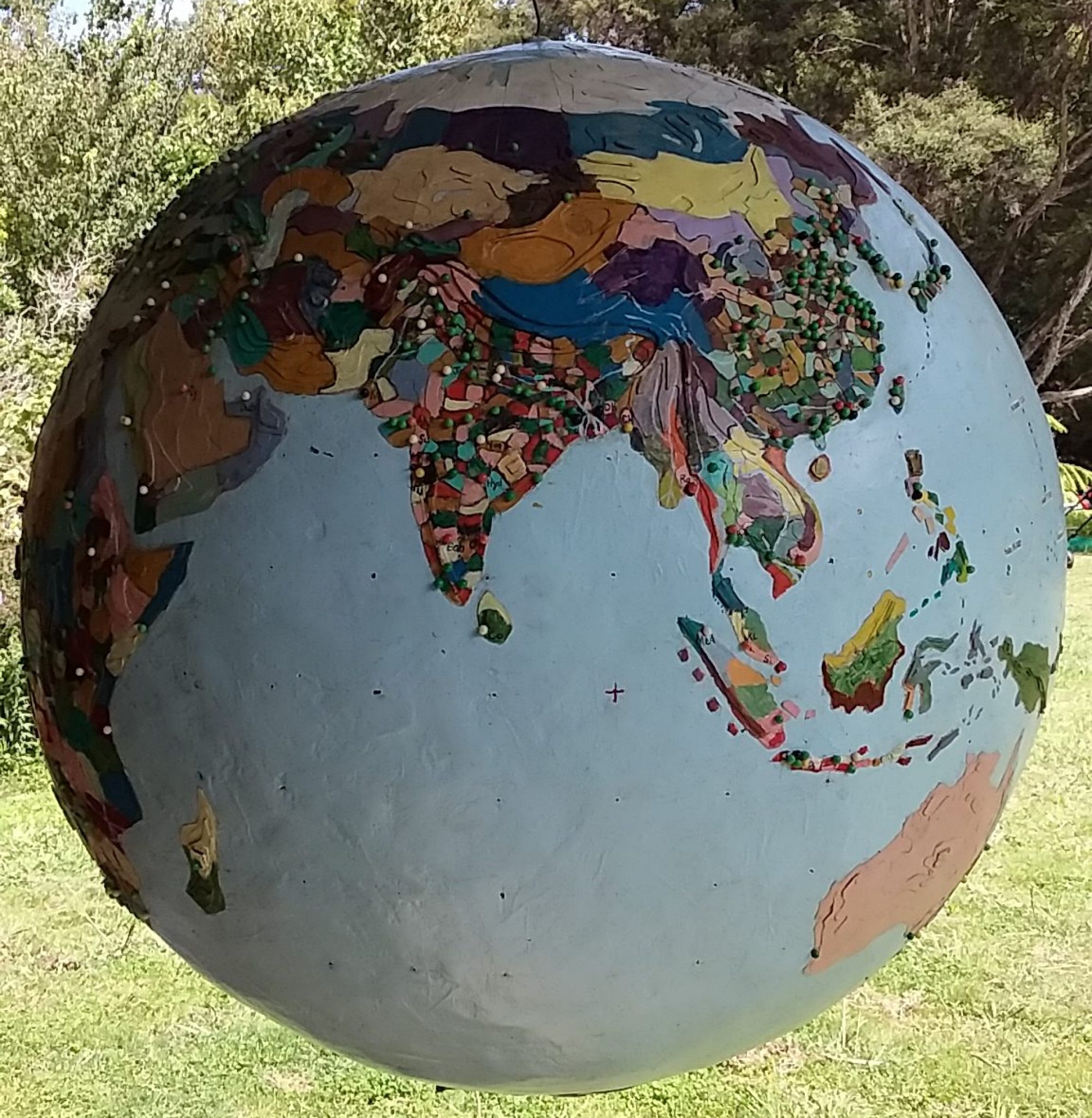The island of Java (population 145 million, 2015) can be divided into approximately twenty millispheres. Starting at the far eastern end of Java, it takes the Indonesian regencies of Banyuwangi (1.6m), Situbondo (0.7m), Bondowoso (0.7m), Jember (2.4m), Probolinggo (1.1m) and Lumajang (1.0m) to make up the millisphere of Far-east Java (7.8m).
In 2012 my travel companion and I journeyed from Jakarta to Surabaya during the month of Ramadan. From Surabaya we went by train to Probolinggo and then took a taxi-van up the Tengger volcanic complex to see Mt Bromo, which had last erupted only the year before. Around the caldera rim, growing in the grey volcanic ash, strawberries, onions and cabbages thrived at high-altitude.
Tourist numbers had climbed back to their pre-Bali bombing highs. In 1996-97, before the Asian financial crisis, tourist visits to Bromo peaked at 130,000; during 2001-02, after the Bali bombing, numbers had dropped to 45,000.
These volcanoes, which includes Semeru, the highest mountain in Java, are home to about 100,000 Tengger people. This ethnic group share the same Hindu religion as the people of Bali and had been driven into the hills by the arrival of Muslim Madurans in East Java in the nineteenth century.
The Tengger people have coped with the arrival of the tourist hordes by writing their own development plan, enforced by community law. No land can be sold, or leased for more than a year, to outsiders and the Tenggerese handle all the transport, accommodation and catering. Every morning the mass descent into the caldera and across the sea of sand, in the dark, to observe the sunrise on the volcanoes may seem chaotic but the Tenggerese are in control and the environmental impacts have not been all bad. Tourism has resulted in higher incomes for the Tenggerese, who can now afford LPG and kerosene for cooking instead of cutting their forests for firewood.
Sandwiched between the island of Bali and Mount Bromo, Far-east Java tends to be a place tourists pass through and it is less crowded than the rest of Java. The highway wound through what appeared to be national parks. Coffee trees and workers huts shared the park with the flora and fauna, with no clear separation between conservation and the economy. Beside the road women turned tobacco leaves drying in the sun.
We had planned to meet up with friends in Bali, but we were running ahead of schedule, so we rested up in Kalibaru, a small town, a short trip away from the Bali ferry terminal at Banyuwangi.
Beside the busy highway we found an unprepossessing motel which backed onto rice paddies and coconut palms. By a spreading Banyan tree we discovered the motel swimming pool, fed by a freshwater spring. Apart from a few frogs we had the unchlorinated pool to ourselves.
After a couple of days almost everyone in town had waved to us, and, between swims in “our” pool, we’d managed to have a close look at Kalibaru’s market and eateries and at the coffee, cinnamon, nutmeg and cloves growing outside town.
On the day that we decided to make a dash for Bali and the rendezvous with our friends we discovered that it was also the end of the post-Ramadan holiday week and public transport was crowded with Indonesians returning to work.
When the train pulled into Kalibaru it became apparent that there wasn’t any space for two more travellers. A baggage car at the end of the train had a door open and there were people inside. Boarding from the tracks posed a problem. Pushing my travelling companion up lacked decorum but I doubted if any of the stunned Indonesians would ever see us again.
At the far end an agitated guitar player sat on a piece of cardboard; most buses and trains in Java had travelling buskers. Uniformed train conductors appeared occasionally to shout abuse at the glaring guitarist, who had cleary transgressed.
Still recovering from the ignominy of her entrance my travelling companion sat sulking on her baggage, but a little while later we were crossing the narrow strait to Bali and joining the tourist hordes.



